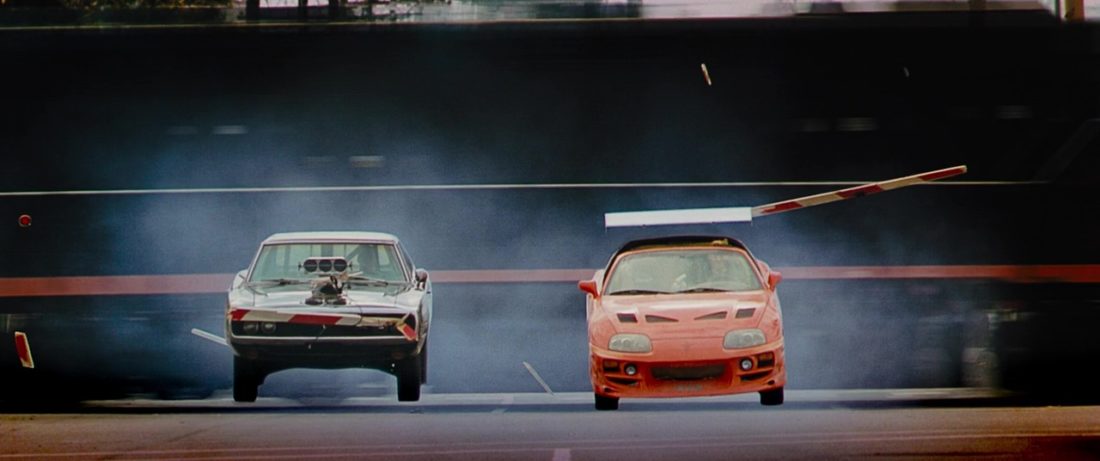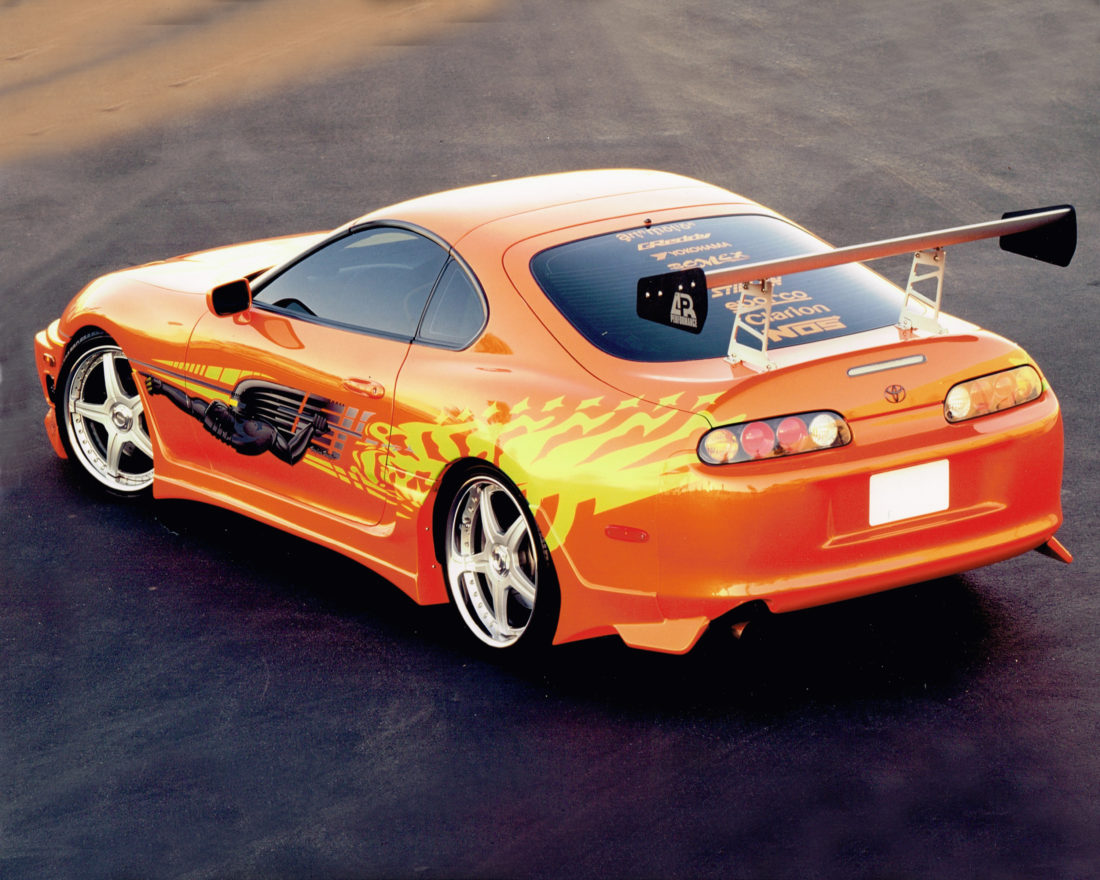The Making of the Sound Effects
One of the most notable aspects of the franchise has to be those "fast and furious" sound effects. I wrote in another blog post (you can read it here ) as to how the engine sounds were done, but here's an excerpt of an interview [Written by Tim Walston for Designing Sound] back in April of 2011. This article explains the tricks used to get some of the sounds of the action sequences. Creating unique fast and furious style sound effects took the work of many talented "foley" artists. "Action movies are pure sonic playgrounds. The busier the scene, and crazier the action, the more opportunities we have with sound to enhance the experience for the audience. But with that opportunity comes the responsibility to clarify the action, and focus the audience’s attention. We want to thrill the moviegoers, not pummel them with audio. As sound professionals, it’s our job to bring to the mix all the elements we think are needed. A great mixer then sorts through the dialog, music and all the sound effects to find the perfect balance from moment to moment. The ultimate authority, in the end, is the director. Rob Cohen makes movies that are great for
Why Skylines are Illegal in the U.S.A. – The Motorex Scandal
If you're reading this, congratulations - you cared enough to inform yourself. The story is pretty long and after you read, you'll understand why I can't post it on Instagram. Let's start with an article that chronicled the downfall ot MotoRex. It's important because it was the root cause of the whole ban on R34s. The following article was written by Richard Chang, a former editor of Super Street magazine, back in 2008. Here is his article that essentially explains why Skylines are illegal in the USA. Begin article -------> IN OCTOBER 2005, Detective Raymond Serna, a 20-year veteran of the Los Angeles Sheriff’s Department, arrived at the warehouse, one of several identical concrete structures that shared a cul-de-sac in Gardena, California, two turns off a stretch of the 110 Freeway that could be best described as monotonous and drab. Exit anywhere along this particular corridor from Carson through Compton and Gardena, and you won’t notice the difference. Here, the sky loses much of its blue to the smog, which is the color of soap scum and exudes the uniform tang of industry. The call came from a company called "Motorex," reporting that five cars had been stolen from its lot in front of the
How to Get Those Fast and Furious Engine Sounds
If I had a nickel for every time someone asked me how they could replicate the Fast and the Furious engine sounds, I'd be a billionaire. Or at least, it sure seems that way. Without question, the sound effects used for the cars were a big part of the reason these movies have become cult classics. But before you get all fired up and try to go out and replicate any particular cars' sound, you need to know a few things. It was always fascinating to me how many people asked about how they could get those Fast and Furious engine sounds for their own car. Obviously, you can never make a Honda sound like a Supra, but for those people who the same make and model of car that we used in the movie, the desire was very real. In fact, it's still real today. The Fast and Furious Engine Sounds Were Mostly Faked While it's absolutely true that Universal went to great lengths to get authentic sound recordings of the cars, the final edit include many other layers of sounds added on top of the sounds of the cars. The Sound Department (or Foley Department) has the task of creating sound effects
The Cars of Craig Lieberman
Forgive the braggadocio title – I used it only to make search engines happy and to help people searching for this information to find it more easily. Like many car nuts, my predilection for cars back to my early youth. I was fascinated by the 1960s Batmobile and later on, the Mach 5 from the Speed Racer cartoon series of the late 1960s. Also like many car nuts, I couldn't afford the cars I wanted when I reach driving age. My family was not well off and I had to pay for nearly everything myself. By the time I was 19, I had moved out and was going to school and working two jobs. I spent money on only a handful of things: school. food, my girlfriend and my car. Still, I managed to have some fun with cars, and over the years, the cars I owned got better. As of this writing, I've had 43 cars. I'm not including in this list the several company cars I have been issued over the years. Here they are in order: 1981 Isuzu I-Mark sedan 1973 Mercury Capri V6 1970 260Z widebody 1973 240Z 1974 260Z 1967 Chevelle 396 1981 Honda Accord hatchback 1978 Fiat
Why Street Racing Isn’t Coming Back to Fast and Furious
I get comments and questions about ten times a day on my Instagram about this: why isn't street racing coming back to the franchise? In the simplest of terms, street racing movies don't make money – action films make money. Let's look at the box office history of the Fast and Furious movies as of late 2018: #1. Furious 7 (2015) Production Budget: $190,000,000 Domestic box Office: $351,032,910 WorldWide box Office: $1,526,748,684 #2. The Fate of the Furious (8) (2017) Production Budget: $250,000,000 Domestic box Office: $225,767,765 WorldWide box Office: $1,237,444,462 #3. Fast & Furious 6 Production Budget: $160,000,000 Domestic box Office: $238,679,850 WorldWide box Office: $789,300,444 #4. Fast Five (2011) Production Budget: $125,000,000 Domestic box Office: $209,837,675 WorldWide box Office: $629,969,804 #5. Fast and Furious (2009) Production Budget: $85,000,000 Domestic box Office: $155,064,265 WorldWide box Office: $363,064,265 #6. 2 Fast 2 Furious (2003) Production Budget: $76,000,000 Domestic box Office: $127,120,058 WorldWide box Office: $237,410,607 #7. The Fast and The Furious (2001) Production Budget: $38,000,000 Domestic box Office: $144,512,310 WorldWide box Office: $206,512,310 #8. The Fast and The Furious: Tokyo Drift (2006) Production Budget: $85,000,000 Domestic box Office: $62,615,510 WorldWide box Office: $157,794,205 Notice that the movies that focus on street racing rank dead last on this list. Proof positive that although we car fans like those movies more, audiences both in the U.S. and globally want to see action movies. The bigger
What is a “Hero” Car?
You'll see this term mentioned online, on this website and in my book. When we're referring to a "Hero" car, what we mean is that it's the prettiest and most complete version of a car we use in a movie whenever we have to build clones (or replicas) as backup cars. I'll explain further. In every movie where you see cars being use, chances are that there are multiples of any one car. For example: In The Fast and The Furious, Universal would need multiple cars because we'd be shooting stunt scenes as well as primary scenes. In any case where stunts will be done, a movie studio will have multiple stunt cars depending on how much footage is needed of any given car action sequence. For Tokyo Drift, there were 10 Mustangs built. They needed so many because on any given night, they could have fender benders multiple times in mulitple cars. For every movie, there are basically two production teams – 1st Unit & 2nd Unit. 1st unit handles most of the footage involving the actors. 2nd unit handles the stunts. It's not uncommon for 1st and 2nd Unit to have a need for the same car, at the same time but
My Movie Cars
I get this question almost daily, despite the fact that this information has been public for more than 18 years. I have to remember that a lot of people have only recently become fans of the Fast & Furious franchise and my efforts on Instagram might have just become known to them. For those who don't know, I owned the following cars that were used in the first two movies: Brian's orange 1994 Toyota Supra Vince's blue 1999 Nissan Maxima SE Brian's silver 1999 Nissan Skyline GT-R All of these cars were owned by me personally before the movie. Universal rented each of the cars from me to use as "Hero" cars, then changed things like the graphics, body kit pieces and/or wheels, to suit their preferences. We built four (or more) replicas of all the Hero cars for use in stunts and as backup cars for use during production. The cars were then returned to me after film production wrapped and I was free to do with them what I wanted. BRIAN'S ORANGE SUPRA In the case of the Supra, I left it as-is (more or less), then sold it about 18 months later. By this time I had changed the seats, updated the
How I Got Started
I’m often asked how I got involved with the franchise. I’d like to say that I had been working towards a goal of landing a career in the motion picture industry, or that I knew somebody who got me that big break, but none of that would be true. In the simplest of terms, my involvement came from blind, dumb, luck. In fact, other than briefly majoring in Film and Television in college, I had long since given up on that dream of even being in show business. It’s probably no surprise to anyone that I’ve been a passionate car guy from a very early age. Like many teens of the era, by bedroom wall was adorned with pictures of Porsches and Lamborghinis. Never in my wildest dreams could I imagine that I would someday own cars like the ones that distracted me from my studies. I had been bitten by the bug. By 1997, I was a die-hard American car guy. I was all about the big V8s and forced induction was a dream that my pocketbook couldn’t really afford. That all changed one day in 1998 when I lined up against a stock-looking, 1995 Toyota Supra. The Supra left me like







